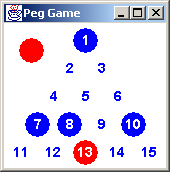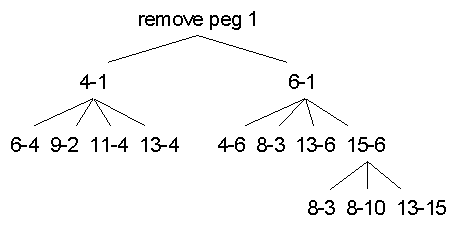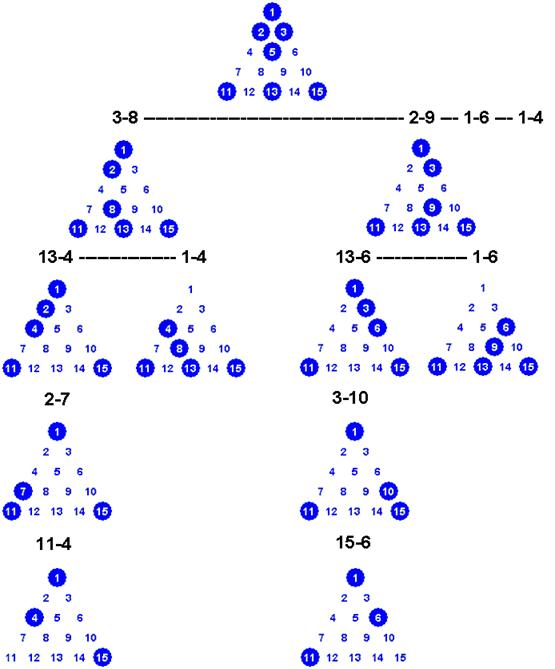Cracker Barrel Peg Game
The Cracker Barrel Peg Game consists of fifteen holes arranged in a triangle, and fourteen pegs. The object is to remove pegs by jumping until one peg remains. The player chooses where the empty hole is positioned before play is begun.In the parallel examples to the right, the player starts the game by selecting the 1 position as the blank spot. She then jumps the 6 peg over the 3 peg and into the 1 position, and removes the 3 peg. Next, the 15 peg jumps over the 10 peg and into the 6 position, and the 10 peg is removed.
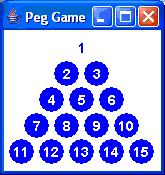
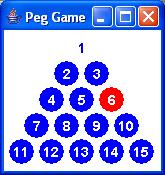
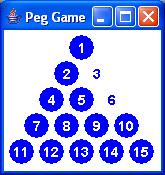
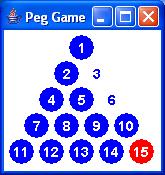
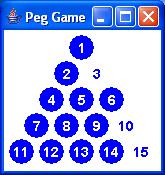
<A>
<B> <C>
<D> <E> <F>
<G> <H> <I> <J>
<K> <L> <M> <N> <O>
Select initial hole: a
a
<B> <C>
<D> <E> <F>
<G> <H> <I> <J>
<K> <L> <M> <N> <O>
Move (from to): f a
<A>
<B> c
<D> <E> f
<G> <H> <I> <J>
<K> <L> <M> <N> <O>
Move (from to): o f
<A>
<B> c
<D> <E> <F>
<G> <H> <I> j
<K> <L> <M> <N> o
Move (from to):
